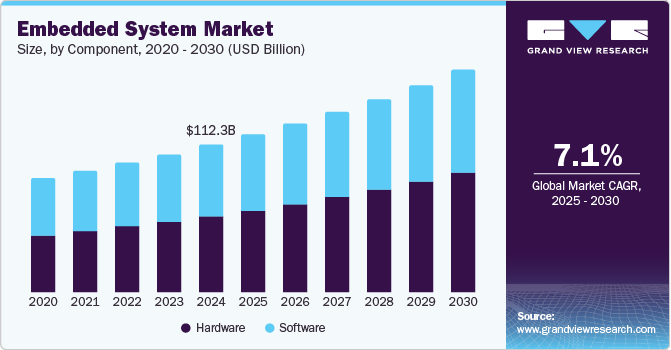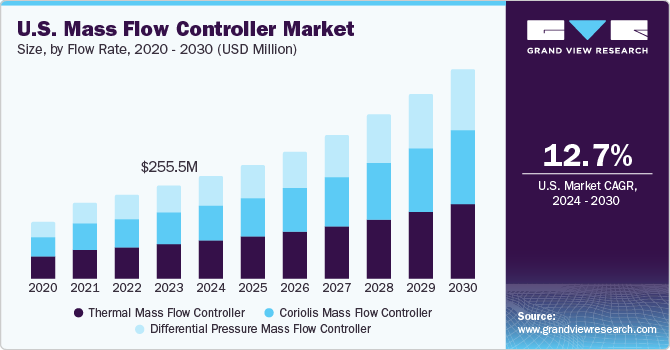Embedded System Market Size, Share & Trends Analysis growing at a CAGR of 7.1% from 2025 to 2030

The global embedded system market size was estimated at USD 112,320.0 million in 2024 and is projected to reach USD 169,046.3 million by 2030, growing at a CAGR of 7.1% from 2025 to 2030. The growing popularity of smart devices, such as wearables, smartphones, and IoT-enabled gadgets, is driving significant demand for embedded systems. These devices rely on embedded technologies for seamless functionality, connectivity, and energy efficiency.
Key Market Trends & Insights
- In terms of region, North America was the largest revenue generating market in 2024.
- Country-wise, India is expected to register the highest CAGR from 2025 to 2030.
- In terms of segment, hardware accounted for a revenue of USD 62,234.4 million in 2024.
- Hardware is the most lucrative component segment registering the fastest growth during the forecast period.
Market Size & Forecast
- 2024 Market Size: USD 112,320.0 Million
- 2030 Projected Market Size: USD 169,046.3 Million
- CAGR (2025-2030): 7.1%
- North America: Largest market in 2024
Request a free sample copy or view report summary: https://www.grandviewresearch.com/industry-analysis/embedded-system-market/request/rs1
The rising percentage of the geriatric population and the increasing prevalence of lifestyle-related disorders are expected to fuel demand for embedded systems in medical and healthcare electronic devices. These systems enable advanced monitoring, diagnosis, and treatment, making them essential for managing chronic conditions common among older adults. The need for more efficient, reliable, and accessible healthcare solutions drives the adoption of embedded technologies, especially for remote patient care and real-time health monitoring. This growing demand is set to significantly expand the embedded system market in the healthcare sector.
Moreover, the rising need for real-time data processing across various sectors-particularly healthcare, automotive, and manufacturing-further fuels this growth. Embedded systems enable quick data analysis and decision-making, supporting automation and improving operational performance. Industries demand faster, smarter devices and instant data processing capabilities, making embedded systems increasingly integral to modern technological advancements. These systems play a crucial role in enhancing device performance and supporting innovation across various sectors. For instance, in October 2024, STMicroelectronics launched the ST1VAFE3BX bio-sensing chip for next-gen wearables such as smartwatches and fitness bands. The chip combines biopotential input with ST’s inertial sensing and AI core, enabling efficient activity detection while improving performance and reducing power consumption for healthcare-focused wearable devices.






